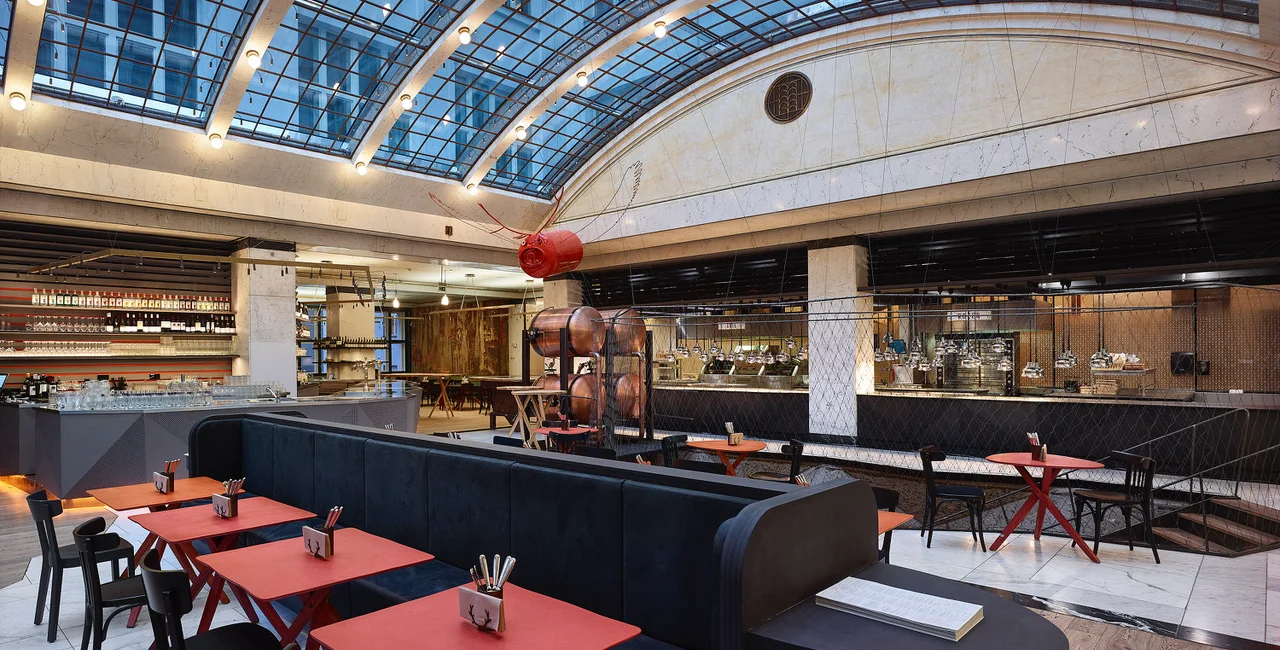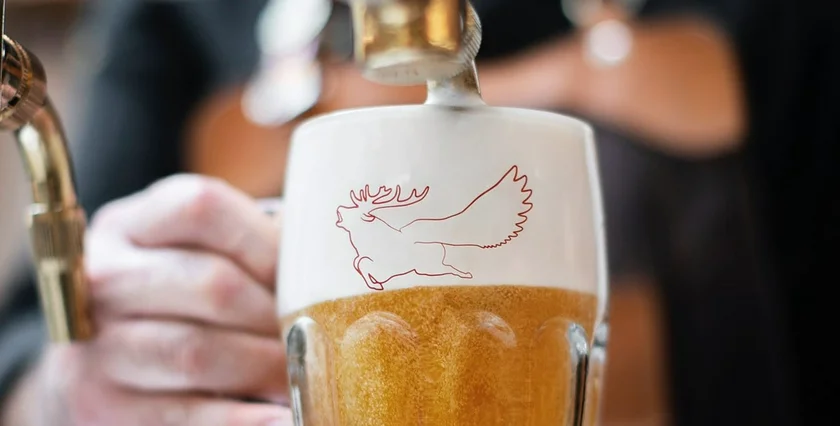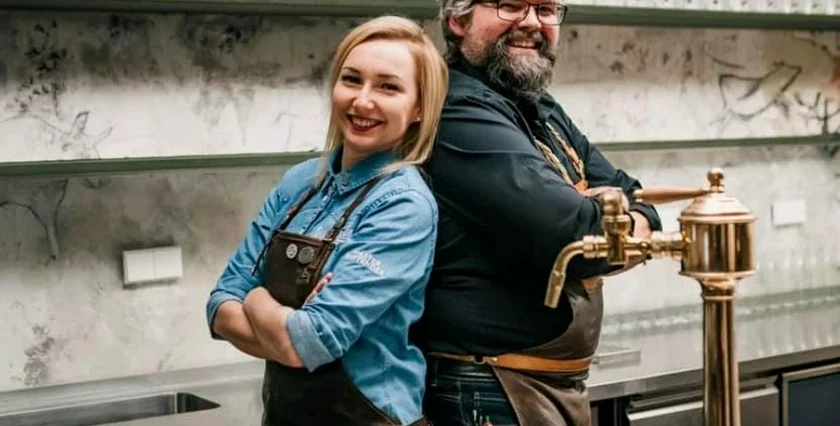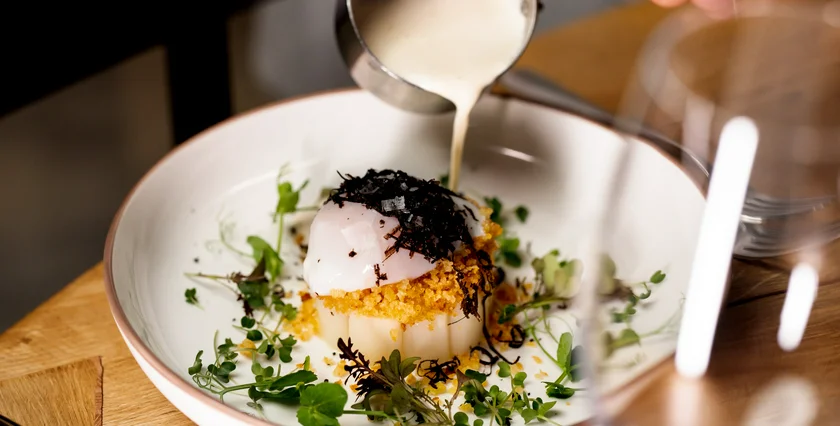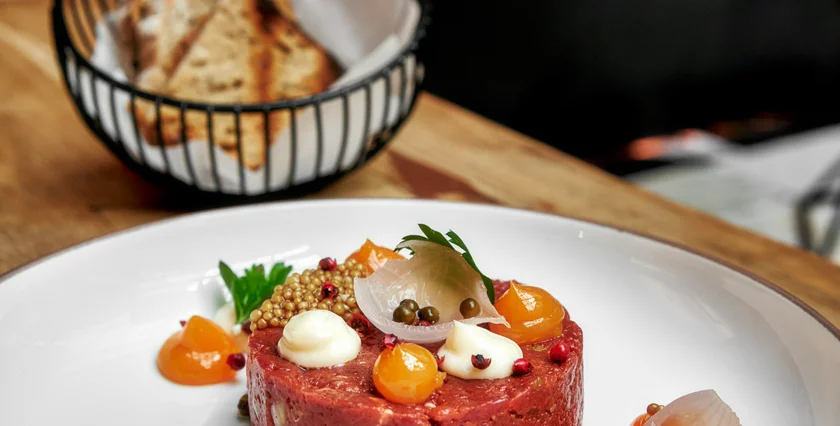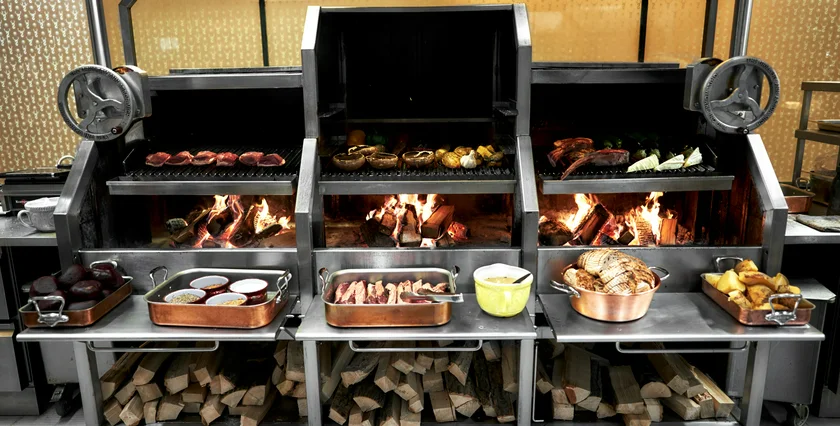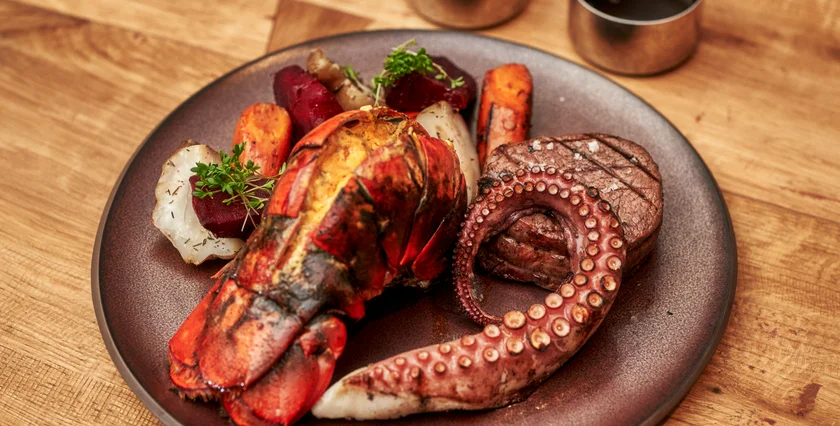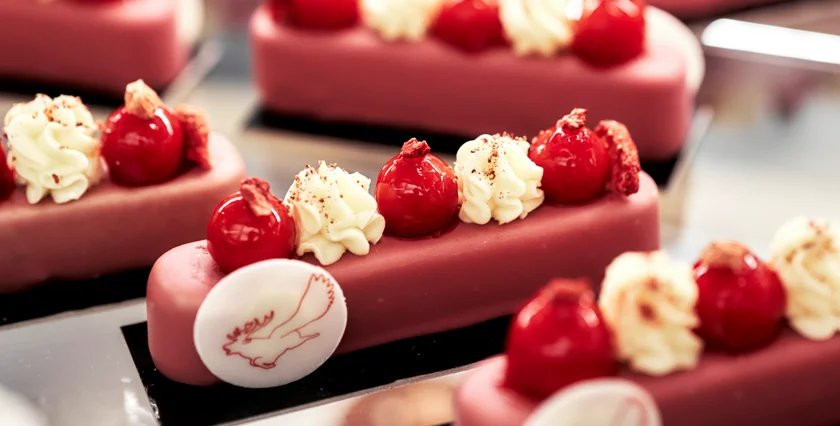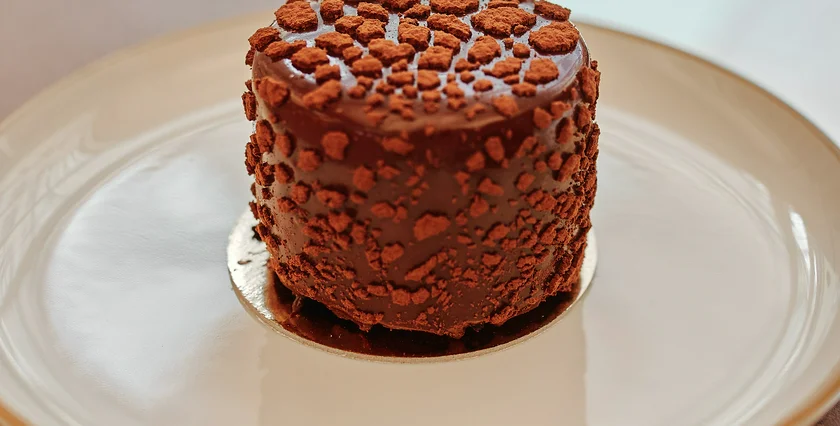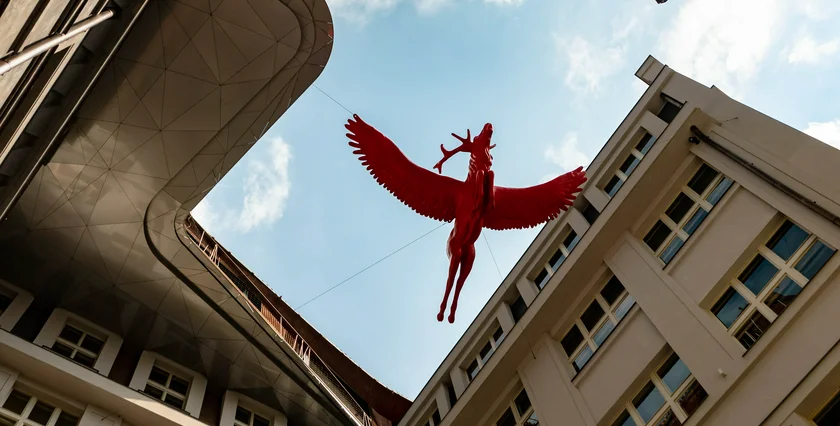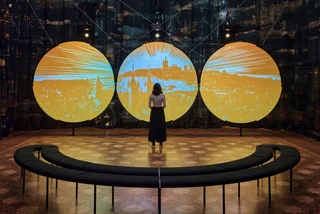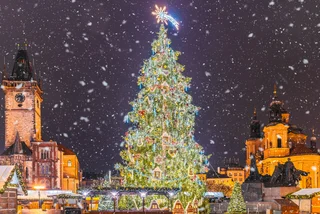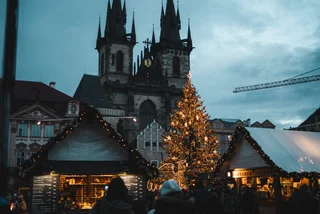On any given day or night at Červený Jelen, Prague’s 2,600-square-meter restaurant, you’re likely to encounter a crowd. Despite its 4 floors, 2 gardens, and seven hundred seats, the space gives off the bustling energy of both a cozy gastropub or a chic bistro – depending on where you sit.
But the past two years haven’t always been kind to the venue which, like most other eateries in the Czech capital, was dealt a significant blow by the Covid crisis and, more recently, inflation.
Today Červený Jelen is operating at full steam ahead, according to Jiří Panuška, co-founder and CMO of the Red Castle Business Group which opened the restaurant in October 2019. Panuška describes the project as one of the most complicated in Czech, and possibly even European history, a culinary and cultural mash-up with menus for every palate and mood.
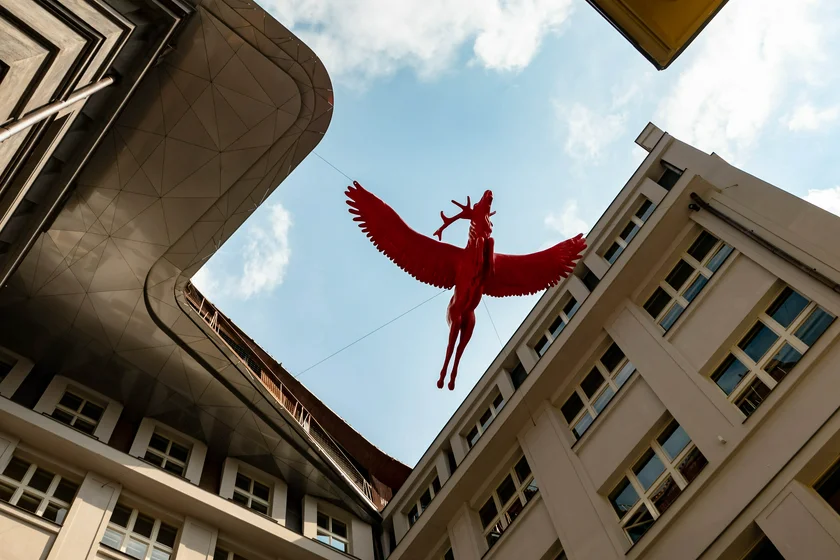
“I tell people you need to visit several times to fully explore what we have to offer,” says Panuška who explains that the menu – like the space – is separated across floors of the First Republic bank on which the restaurant stands.
Upstairs in the “Bank” Wagyu steaks are fired on wood from the Křivoklát forests and accompanied by perfectly poured Pilsner Urquell from a unique 12-meter-high “tank tower” while downstairs in the “Vault” an intimate 40-seat “elegant dining” restaurant within a restaurant awaits.
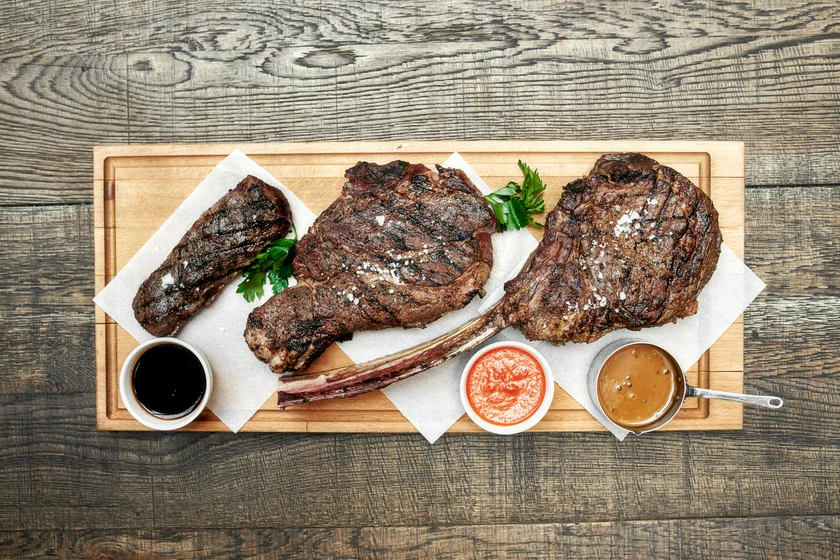
But Červený Jelen is far from a typical beer pub, Panuška says. “We are from Pilsen and even worked for Plzeňský Prazdroj and SABMiller which means that while beer is very important for us we also know how to serve good wine and cocktails as well as delicious desserts and great meals.”
When pressed to say how their pour compares to other beer-focused Prague pubs Panuška says with a smile he firmly believes that beer should be around 4 degrees when leaving the tap and that other pubs serve it a bit too cold.
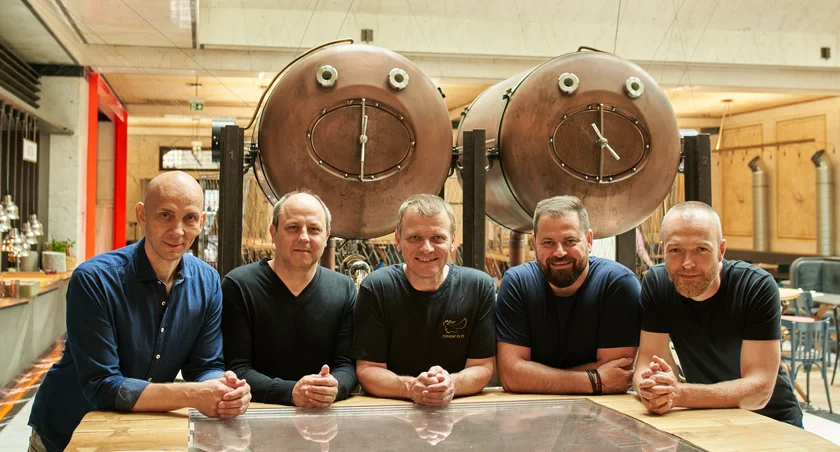
The second part of the Červený Jelen experience is the seasonal tasting menu served from Tuesday to Friday evening by executive chef, Marek Fichtner in the “Vault.” Called “Trezor” in Czech, the space was once just that.
The project, debuting in autumn 2021, was the brainchild of former MasterChef Česko judge Fichtner who, aside from apprenticing at Noma in Copenhagen, considered by many to be the best restaurant in the world, has had a distinguished career in Czechia and internationally.
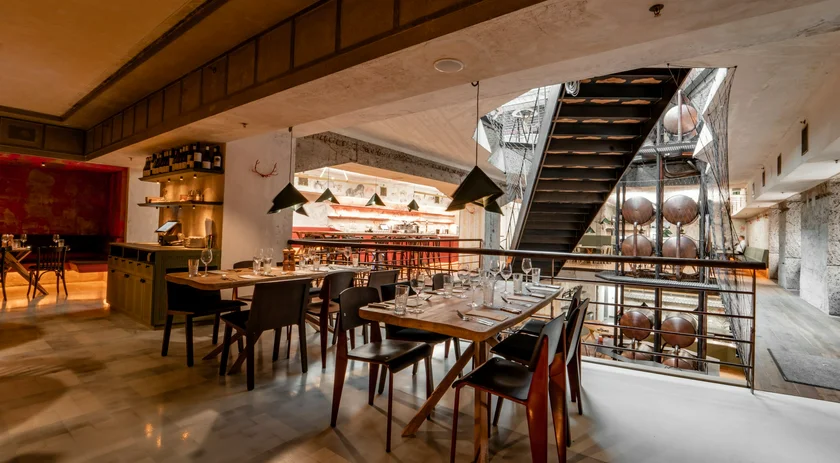
The menu reinforces the talents of Fichtner’s current team and feels entirely befitting of a Noma grad in its use of woodland ingredients. Michelin events with Fichtner’s Michelin-awarded friends from Germany, France, and Denmark are scheduled for later this year.
A recently opened exhibit of works by contemporary Czech artists, curated by Matěj Racek and 2Media, gives the dining experience a cultural dimension.
Other unique Červený Jelen outlets include a “Klubovna” (clubhouse) which houses a stunning Cubist bar as well as a series of lavishly restored meeting rooms. Both can be rented for private parties and team-building events. Occasionally, Klubovna will open to the public for events – actor and singer Jiří Schmitzer will perform there on May 28.
The separate concepts share a connection via the landmark building they are housed in.
Built by Count Špork in the 18th century and modernized by Josef Gočár in the early 20th century and then renovated by Stanislav Fiala in the past decade, the building originally served as a palace for the Špork family and then the headquarters of the third-largest bank in former Czechoslovakia.
“It takes more than 60 full-time employees including managers plus part-timers and housekeepers to keep it going,” says Panuška. “You can easily meet over 30 people each shift.
He describes the restaurant’s “hidden gems” including an original “tube mail” system from the ‘20s, paintings by Patrik Habl, and more recent additions like the levitating deer sculptures by Michael Gabriel. There are also a couple of lights that they can’t switch off, Panuška jokes.
While the idea behind the whole Červený Jelen concept feels contemporary, the friendly vibe and atmosphere, enhanced by the customer-focused approach, also pay homage to a Czech pub culture that many say has all but dried up over the past few years.
Panuška says the death of Czech pub culture would mean the death of the Czech nation but believes the eradication of ‘90-era pubs is a healthy transformation.
He sees it as his generation's challenge to take back Czech food’s reputation, spoiled as it was by the communist era, and preserve its incredible roots and core.
Pointing to the Czech mastery of mushrooms, soups, pork, cabbage, pastry, and freshwater fish Panuška says that when it comes to Czech cuisine, keeping a good balance between tradition and modern meals is the way forward.
To be honest, typical pubs, especially from this era were usually a disgrace. Now low-quality pubs are being closed and new pubs with better customer service are being opened,” he says, clarifying that traditional “štamgast pubs” like U Zlatého Tygra or U Černého Vola remain national treasures.
“I feel a new wave is coming right now and we hope to be among its leaders. The key will be to validate higher prices caused by inflation through better quality, to attract talented people to work in gastronomy, and to transform Czech gastronomy into a modern, attractive, and customer-focused part of the Czech economy.”
With an inventive menu that ranges from classics like svíčková to modern Wagyu beef to pea souflé with goat cheese, a prime location in the heart of Prague, and a grand setting amid historic splendor, Červený Jelen can surely bank on return visits.
This article was written in association with Červený Jelen. To read more about our partner content policies see here.












 Reading time: 4 minutes
Reading time: 4 minutes 